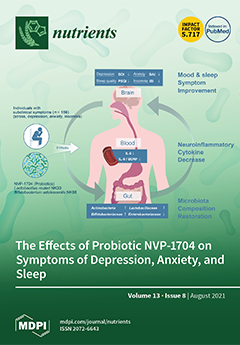Milk intake has been associated with risk of neurodegenerative diseases in observational studies. Nevertheless, whether the association is causal remains unknown. We adopted Mendelian randomization design to evaluate the potential causal association between milk intake and common neurodegenerative diseases, including multiple sclerosis (MS),
[...] Read more.
Milk intake has been associated with risk of neurodegenerative diseases in observational studies. Nevertheless, whether the association is causal remains unknown. We adopted Mendelian randomization design to evaluate the potential causal association between milk intake and common neurodegenerative diseases, including multiple sclerosis (MS), Alzheimer’s disease (AD), amyotrophic lateral sclerosis (ALS), and Parkinson’s disease (PD). Genetic associations for neurodegenerative diseases were obtained from the International Multiple Sclerosis Genetics Consortium (
n = 80,094), FinnGen consortium (
n = 176,899), AD GWAS (
n = 63,926), Web-Based Study of Parkinson’s Disease (
n = 308,518), PDGene (
n = 108,990), and ALS GWAS (
n = 80,610). Lactase persistence variant rs4988235 (
LCT-13910 C > T) was used as the instrumental variable for milk intake. Genetically predicted higher milk intake was associated with a decreased risk of MS and AD and with an increased risk of PD. For each additional milk intake increasing allele, the odds ratios were 0.94 (95% confidence intervals [CI]: 0.91–0.97;
p = 1.51 × 10
−4) for MS, 0.97 (0.94–0.99;
p = 0.019) for AD and 1.09 (95%CI: 1.06–1.12,
p = 9.30 × 10
−9) for PD. Genetically predicted milk intake was not associated with ALS (odds ratio: 0.97, 95%CI: 0.94–1.01,
p = 0.135). Our results suggest that genetically predicted milk intake is associated with a decreased risk of MS and AD but with an increased risk of PD. Further investigations are needed to clarify the underlying mechanisms.
Full article






